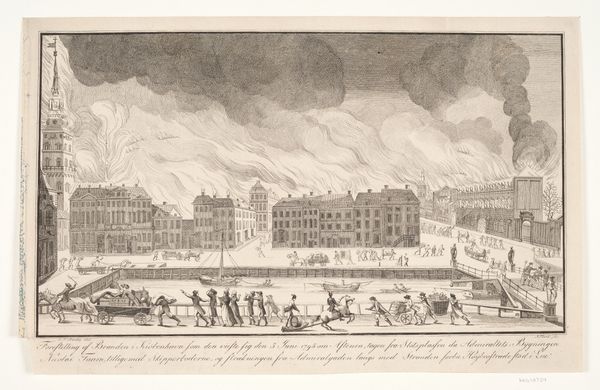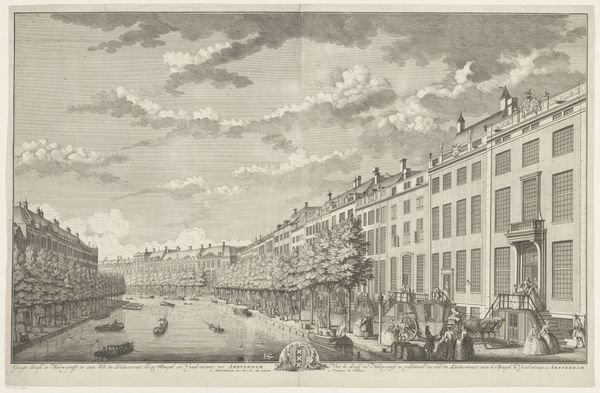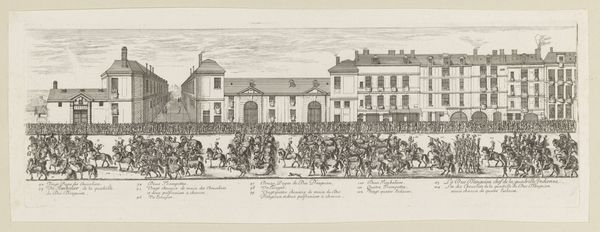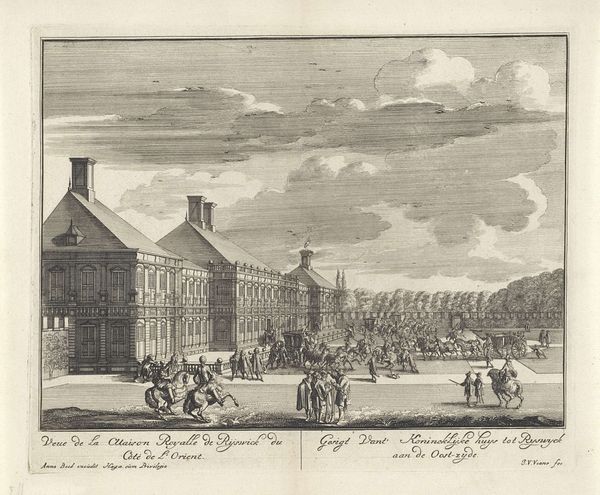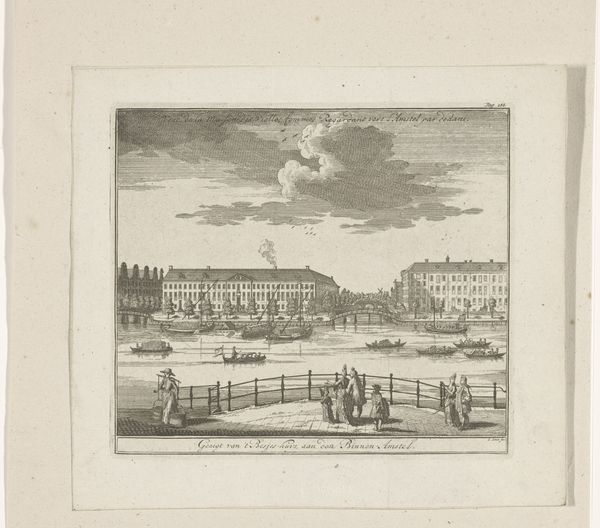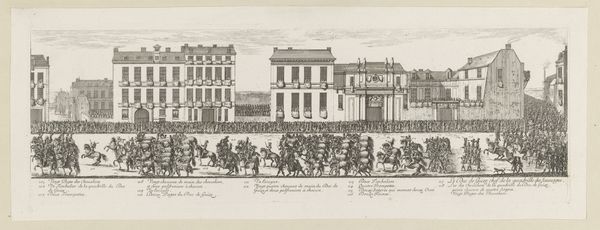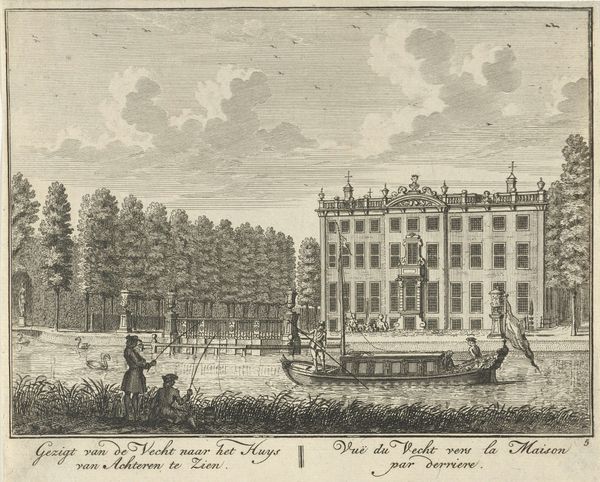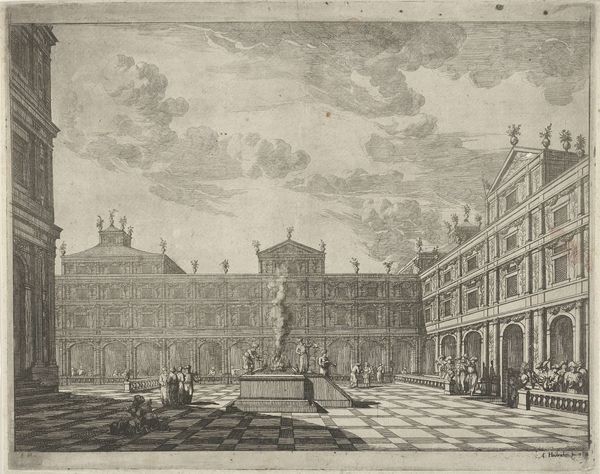
print, engraving
#
portrait
#
baroque
# print
#
landscape
#
cityscape
#
history-painting
#
engraving
Dimensions: height 98 mm, width mm
Copyright: Rijks Museum: Open Domain
This print, made by Israel Silvestre in the 17th century, is an etching. This means that the image was incised into a metal plate, probably copper, with a sharp needle. The plate was then inked, and the ink wiped away, remaining only in the recessed lines. Finally, it was pressed onto paper. Etchings like this were essentially a form of mechanical reproduction, allowing images to be circulated widely. In Silvestre’s time, this process was becoming highly sophisticated, a crucial technology for disseminating information and shaping public opinion. Notice the level of detail here. Look at the way that Silvestre captures the texture of the buildings, the monument of Henry IV, and even the figures milling in the square. All of this detail had to be painstakingly etched into the plate, a labor-intensive process that required skill and patience. It's a reminder that even seemingly simple images like this one are the result of complex and highly skilled creative labor, and of technology that was transforming the world at the time.
Comments
No comments
Be the first to comment and join the conversation on the ultimate creative platform.
